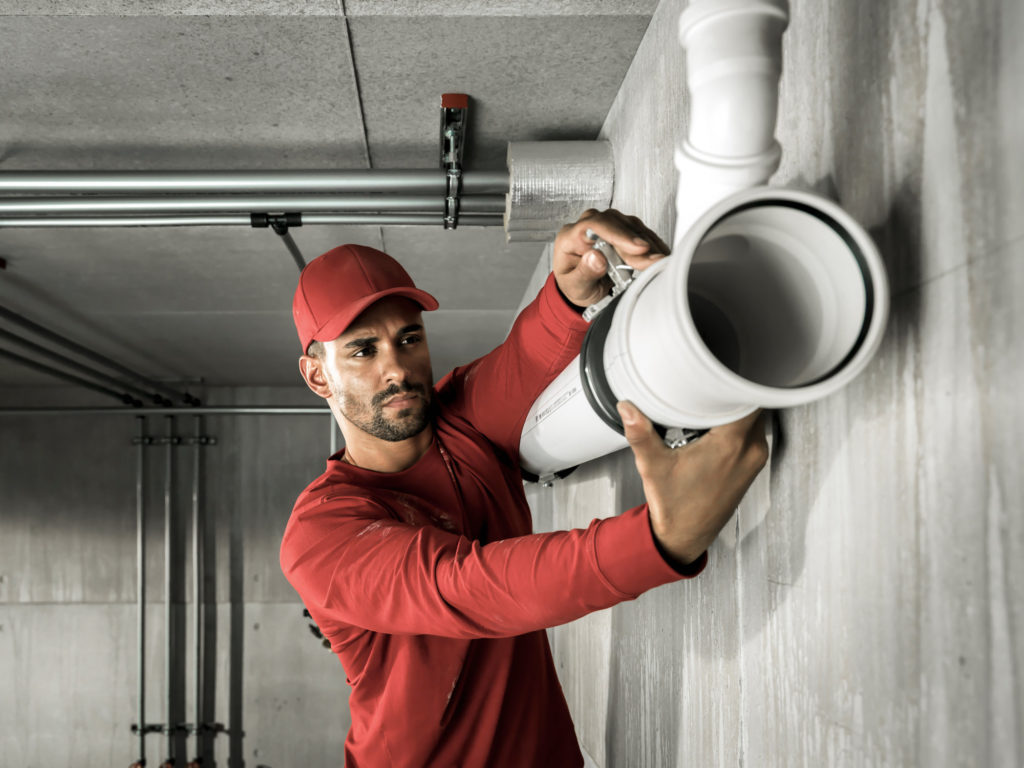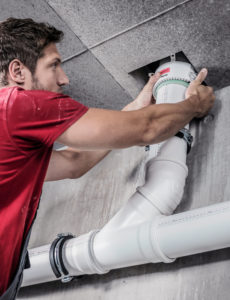Fire safety measures are important to a building’s design and construction, particularly in high-rise and multiple occupancy developments. Though contractors consider acoustic performance when installing drainage systems throughout these buildings, they may not be aware of how this can factor into fire safety. Indeed, with 2019 alone seeing five serious incidents of fire in multiple occupancy residences[1], Franz Huelle, Head of Technical at REHAU Building Solutions, discusses the intrinsic link between acoustic performance and fire safety when specifying soil and waste drainage solutions for high-rise developments.
Following incidents such as the Cube student accommodation fire in Bolton and the release of Phase I of the Grenfell Inquiry, it is clear that the selection of materials and systems for high-rise developments is being scrutinised more than ever. As such, key stakeholders are facing a balancing act when specifying for the different aspects of a potential development. Namely, they must ensure solutions comply with fire safety regulations, while also providing the building’s occupants with comfortable, high-quality living conditions.
Low-performing acoustic drainage systems can negatively impact these living conditions, as they allow sound traveling through the building’s structures to permeate into occupants’ homes. This poor acoustic performance occurs due to a number of factors, including poorly executed installations and low-quality fittings. However, this can be negated through the use of correct bracketing, well-insulated pipes, and fittings that absorb vibrations at points of directional change, all of which serving to optimise overall system performance.
Inherently linked
When choosing their development’s drainage systems, it is not uncommon for specifiers to not see the inherent link between fire safety and acoustic performance. However, taking both these priorities in tandem can result in more effective drainage systems that minimise sound disturbances while also offering further protective measures if a fire were to break out.
Both fire safety and acoustic performance are detailed in the Building Regulations. Approved document B, 2019, of these regulations provides the framework for fire safety standards in all building types, setting out detailed guidelines around preventing fires spreading through building services in multiple occupancy and high-rise developments.
Approved document E, 2015, goes into detail on resisting the passage of sound in buildings, and what considerations should be paid during the design and specification process to facilitate this. Alongside establishing standards for correctly sound-proofing individual residences, it also sets out how to correctly install drainage systems through separating floors or walls.
It is therefore understandable why specifiers might not make the link between these two topics, as while each document provides extensive information on their specific topic, they do not address its association with the other. Consequently, without a clear and explicit link being described, it is up to the relevant build stakeholders to see how these seemingly disparate areas actually greatly impact one another.
 Fire safety — a priority
Fire safety — a priority
In order to correctly specify drainage systems that will meet the exacting regulations associated with high-rise developments, contractors must therefore prioritise both excellent acoustic performance and fire protection. By selecting either an incorrectly installed solution, or one not adherent to these regulations, developers run the risk of failing on-site inspections. If this were to occur, the entire system and all its accompanying pipework may require removal and reinstallation, which can prove an expensive and time-consuming process.
Fire collars have a very important part to play within acoustic drainage systems, as they provide a line of defence against fire spreading through piping networks. Because of this, the important of ensuring these collars are fitted correctly cannot be overstated from a fire safety perspective. However, incorrect installation can also impact acoustic performance, as a collar in contact with accompanying pipework can provide a direct channel from which sound vibrations can transfer from the piping to the building’s structure.
From here, this vibration could potentially disrupt the living conditions of the building’s occupants, leaving the contractor to potentially face a costly reinstallation that could also damage the reputation of any key stakeholder involved in the project. As such, it may prove more practical for specifiers to consider systems that best solves all of these issues at once, rather than being guided by initial cost savings.
Solutions for safety and performance
With pressure on contractors to specify the best acoustic drainage system adhering to fire safety regulations, the onus is on suppliers to offer solutions that meet these growing lists of demands. Companies such as REHAU are producing pipework systems with available accessories to deliver the best acoustic performance while also ensuring its fire safety.
RAUPIANO PLUS, the acoustic soil and waste system from REHAU, is an example of a solution with excellent soundproof performance that also adheres to fire safety standards. The combination of its sound-absorbing multi-layer technology, elbow joints with thicker walls, and patented acoustic brackets affords the system a 17 dB sound rating. This means any vibrations or noise from water running through the system does not enter the building structure and disturb its occupants.
 Fire collars ranging in sizes and for regular or angled fitting, on top of fire stop tape, ensure that RAUPIANO is completely compliant with fire safety regulations while providing good acoustic performance. Thanks to these fire protection measures, this system is fire resistant for up to 120 minutes and carries an European Technical Approval (ETA) against BS EN 1366-3: Fire resistance tests for service installations. Penetration seal.
Fire collars ranging in sizes and for regular or angled fitting, on top of fire stop tape, ensure that RAUPIANO is completely compliant with fire safety regulations while providing good acoustic performance. Thanks to these fire protection measures, this system is fire resistant for up to 120 minutes and carries an European Technical Approval (ETA) against BS EN 1366-3: Fire resistance tests for service installations. Penetration seal.
In conclusion, though low-cost acoustic drainage systems may initially seem an attractive option for specifiers, the risk of failing inspections and having to carry out expensive replacement and reinstallation work outweighs any initial short-term benefit. Consequently, and with high-rise developments increasingly under the spotlight, it is in all stakeholders’ interest to invest in full solutions that can resolve all concerns around acoustic performance, fire safety, and compliance with government regulations.
For more information on REHAU’s acoustic soil and waste system, RAUPIANO PLUS, please visit: www.rehau.uk/raupiano
[1] https://www.theguardian.com/commentisfree/2019/nov/19/grenfell-fires-cladding-safety-building-owners









